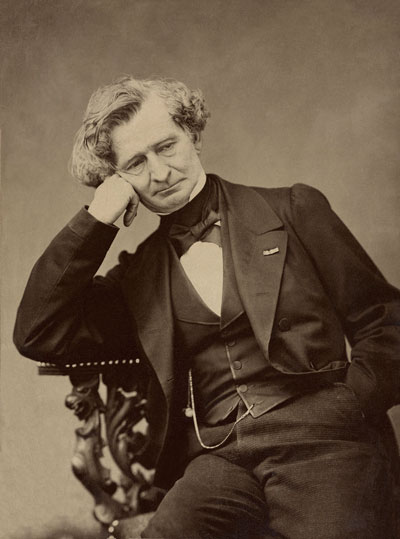Hector Berlioz

- Born: December 11, 1803, La Côte-Saint-André, France
- Died: March 8, 1869, Paris
Overture to Les francs-juges (“The Judges of the Secret Court”), Op. 3 (Fri-Sun)
Marche des Gardes (“March of the Guards”) from Les francs-juges, Op. 3 (Sun)
- Composed: 1826
- Premiere: The Overture and two excerpts were premiered at the Paris Conservatiore, May 26, 1828.
- Instrumentation: Overture: 2 flutes (incl. 2 piccolos), 2 oboes, 2 clarinets, 2 bassoons, contrabassoon, 4 horns, 2 trumpets, cornet, 3 trombones, 2 ophicleide, timpani, bass drum, crash cymbals, suspended cymbals, strings. Marche des Gardes: 2 flutes, 2 oboes, 2 clarinets, 4 bassoons, 4 horns, 2 trumpets, 2 cornets, 3 trombones, 2 tubas, 2 timpani, bass drum, crash cymbals, field drum, snare drum, strings
- CSO notable performances: (Overture) First Performance: October 1944, Eugene Goossens conducting. Most Recent: November 1966, Erich Kunzel conducting. (Marche des Gardes) These are the first CSO performances of the March.
- Duration: approx. 12 minutes for the Overture, 5 minutes for the March
Hector Berlioz left his home province for Paris at the age of 18. Obeying the wishes of his physician father, he began to study medicine, although he knew he wanted to be a composer. Despite strong paternal disapproval, he took up the study of composition as a private student of the then-famous Jean-François Le Sueur. Less than three years later, Berlioz’s first large-scale work, a mass, was given a performance at St. Roch’s church in Paris. It was only after this successful début that Berlioz, in October 1826, enrolled in Le Sueur’s composition class at the Conservatoire. The ambitious young man immediately tackled what was probably the most difficult genre of all—an opera. The somewhat convoluted libretto, written by Berlioz’s friend Humbert Ferrand, had a vaguely medieval flavor, reflecting the way the Romantic generation liked to think about the “dark” Middle Ages. The title Les francs-juges referred to the members of those mysterious secret tribunals that had been introduced into recent European literature by Goethe’s drama Götz von Berlichingen.
We need not dwell too long on the details of the story, replete with usurped thrones, fair maidens forced to marry tyrants, and man-crushing bronze statues lurking in dark caverns. The opera was never performed and survives only in fragmentary form. The overture and five numbers are all that we have—plus the “March of the Guards,” recycled as the famous “March to the Scaffold” in Symphonie fantastique.
The overture and two excerpts were performed at the Conservatoire on May 26, 1828. The composer probably played percussion in this performance, as he did again when the overture was reprised the next year. The overture was a huge success and became the first work by Berlioz to be performed outside France.
The slow introduction opens with a soft lyrical melody that is followed by the trombone theme that made such a strong impression on the orchestra musicians. The fast section begins with an agitated string theme, contrasted by a lyrical melody that comes from a quintet for flute and strings that Berlioz had written at the age of 15. Even the stern Dr. Louis Berlioz admitted that this theme had merit. When Hector played it for him on his flute, the father said: “Ah, now that is what I call music!” But that was apparently not sufficient reason for him to accept his son’s musical ambitions.
The central part of the overture is made up of mysterious tremolos and excited accompanying figures in the strings, over which soars a new melody, played by flutes and clarinets and moving in extremely slow note values. It was, as Berlioz later disclosed, the theme of a now-lost prayer aria from the opera. Berlioz specifically noted in the score that the orchestra was here portraying two different characters at the same time: the strings had to be “rude and wild,” while winds had to play in a “soft and melancholic” manner. The lyrical theme returns, to be subjected to a rather adventurous development, at the end of which it is combined with a trombone theme from earlier to create a truly spectacular ending.
—Peter Laki